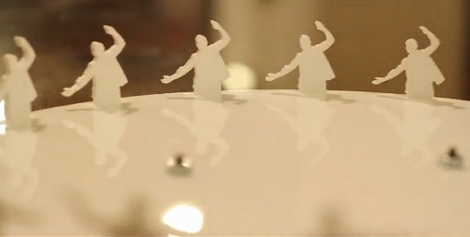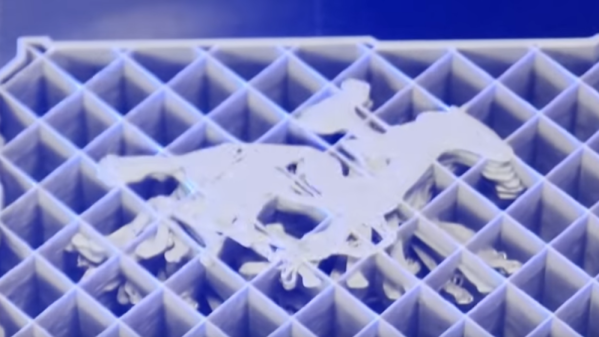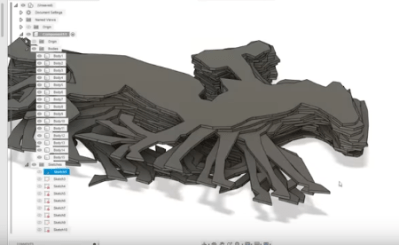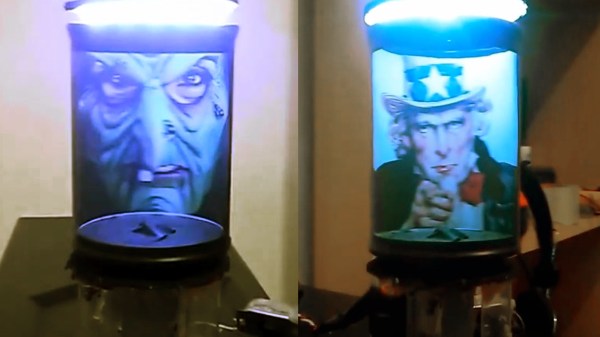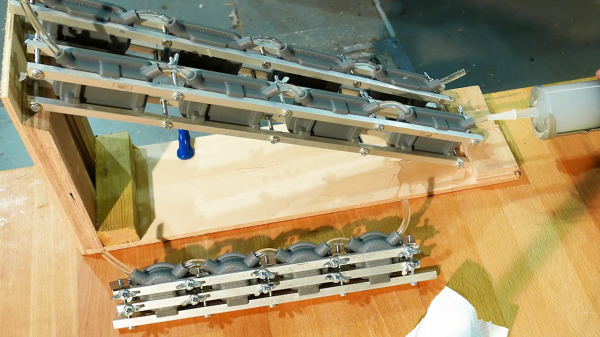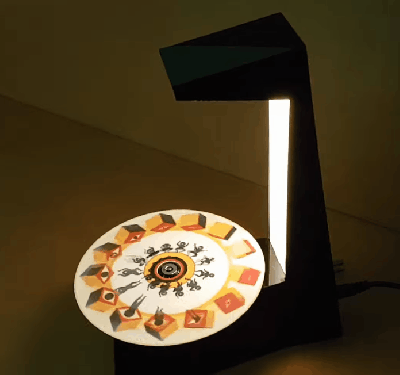Normally, 29 men walking around in an endless circle would be the stuff of an [M.C. Escher] engraving. [Tobias] turned this into a reality with a little help from some LEDs and a 3D printer.
Like his earlier project, [Tobias] built himself a nice little strobing zoetrope that maintains the illusion of movement by flashing LEDs at precise intervals. Instead of a flat 2D image, [Tobias] went for a walking 3D figure that marches to the beat of a timer circuit. The figures themselves were printed via Shapeways.
The electronics were improved for this iteration. Formerly, [Tobias] used a 555 and a whole bunch of auxiliary components. The circuit was improved for this version to uses Schmitt triggers and an optical encoder. The easy-to-build-on-perfboard schematics and layouts are available, so feel free to build one for yourself.
[Tobias]’ zoetrope isn’t much different from the gigantic Charon sculpture seen at last year’s Burning Man. Sure, it’s not 40 feet tall but it’s still a nice piece of work.


